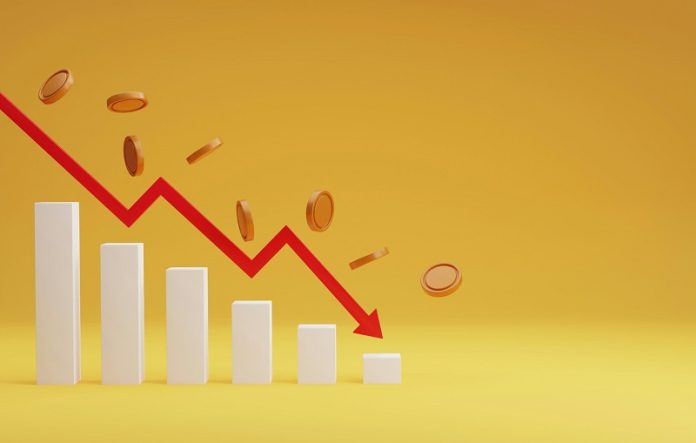
Recent headlines have painted a complex picture of the U.S. economy: announcements of trade deals and tariffs, a slight uptick in inflation, and a disappointing jobs report that tanked markets and cost the head of the Bureau of Labor Statistics her job.
After keeping interest rates steady for the fifth time in a row at its July meeting, the Federal Reserve has a “dilemma,” according to Bob Triest, a professor of economics at Northeastern University.
“The Fed is worried about both its price stability goal of 2% annual inflation as well as its goal to have maximum employment,” says Triest.
“That creates a dilemma because in pursuit of this price stability goal, the Fed would want to keep interest rates stable or maybe even increase them.
But to achieve the maximum employment goal, it might want to decrease interest rates.”
Related: The value of the dollar is dropping. What does that mean for Americans and the world?
Northeastern Global News spoke with Triest about when interest rates are likely to be cut, what the Fed’s actions mean for consumers and markets, and more.
Comments have been lightly edited for brevity and clarity.
When is the Fed likely to cut rates?
At every other meeting of the Federal Open Market Committee, which determines the federal funds rate, they release something called the Survey of Economic Projections that lays out what the members of the FOMC expect to be happening in the economy over the next three years, as well as what they expect to be doing regarding adjusting interest rates.
They didn’t release that survey at this meeting but did at their previous meeting in June, when they projected that they would likely be cutting interest rates by half a percentage point or 50 basis points by the end of the year.
What will the Fed be looking at to determine whether to adjust interest rates?
What the Fed does at their next meeting in September depends very critically on what the numbers look like over the next month or so.
If unemployment goes up substantially in the next employment report at the beginning of September and if job creation continues to be low, that would push the Fed toward decreasing interest rates at its next meeting.
On the other hand, if the next inflation numbers come in high, that would put pressure on the Fed to not decrease rates because it could further fuel inflation.
How would a rate cut impact consumers with mortgages or student loans or credit card debt? What’s the consumer impact?
Well, a rate cut doesn’t have a direct impact because it’s just on the federal funds rate, but that federal funds rate does have an impact on other interest rates in the economy that do matter to consumers and to businesses.
A series of cuts in the federal funds rate would lead toward a reduction in mortgage interest rates as well as interest rates on auto loans and other consumer loans, as well as to loans to businesses. That would lead to the economy being stimulated and that would improve borrowing conditions for consumers and businesses and also promote job creation and economic growth.
What does a delayed rate cut signal about the health of the US economy?
I think it indicates that there’s a lot of uncertainty regarding the economic outlook.
The economy has been remarkably resilient, much more resilient than I expected, so far — while there is a little upward pressure on inflation, it’s been pretty minor and there has been less upward pressure on inflation than perhaps most economists feared after the ‘Liberation Day’ announcement by President Trump of very substantial tariffs.
But there’s concern that while the economy has been extraordinarily resilient, that may not last forever.
There is concern that businesses so far have been reluctant to pass on cost increases associated with tariffs, but as we settle into a more stable tariff regime, businesses may well be more eager to pass on those increases.
A second reason for caution is that with the uptick in inflation after COVID — which was largely due to supply chains being snarled due to disruptions associated with the pandemic as well as to supply shock associated with the Russian invasion of Ukraine — economists, including those at the Fed, thought that it would just be a one-time jump followed by the inflation rate coming back down to roughly where it was before. But inflation turned out to be much more persistent.
Now there’s concern with the tariffs that while many economists think this will be a one-time jump in prices with the inflation rate then coming down quickly, no one really knows — the inflation rate hasn’t gone up as much as had been feared, but the worst may yet to be to come.
Speaking of the post-COVID economy, the buzzwords for the past few years have been ‘soft landing’ and ‘recession.’ Where are we on those?
The Fed was actually extremely effective in bringing down the inflation rate slowly but surely without inducing a recession. We did achieve the soft landing.
But going forward it’s going to be extremely difficult for the Fed to thread that needle of getting interest rates right in pursuit of this twin mandate goal of price stability and maximum employment as the actions of the Trump administration have put upward pressure on inflation again and also caused economic upheaval that is resulting in a deteriorating labor market. So we’re in a new situation.
So, regarding personal finances, should the average investor change his or her financial strategy because of the Fed’s action or inaction?
Essentially, that’s never a good idea. The average investor should not try to time the market. It’s just too difficult for the average investor to do that. Even the market pros mostly shouldn’t try to do that.
Written by Cyrus Moulton/The Conversation.



